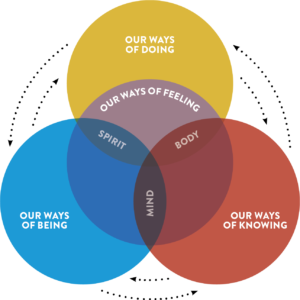Land Acknowledgement
The Winnipeg Boldness Project resides in and works on the ancestral, traditional, and contemporary lands of the Anishinaabeg (Ojibwe), Anishinabewaki (Oji-Cree), Dené, Michif Piyii (Métis), Nêhiyawak (Cree), and Očhéthi Sakowin (Dakota). We recognize that we have benefited from and continue to benefit from colonization on the Treaty 1, Treaty 3, and Treaty 5 Territories.
It is important to also acknowledge how we benefit in this territory at the cost to Indigenous Peoples. Winnipeg has been drinking clean water for over a century via an aqueduct from Shoal Lake. In 1917, 3000 acres of Treaty 3 was declared property of the city of Winnipeg to build the aqueduct. This aqueduct was built over ancestral burial ground, to build these structures, the ancestors were disinterred and reburied. Construction of the aqueduct changed the waters significantly, causing the peninsula to become a man-made island. This now isolated Nation faced many challenges as a direct result from this aqueduct; Necessities like water, groceries, schools, and mail were only accessible via the dangerous trek to the mainland. Lives of adults and children were lost crossing to and from the mainland. Freedom Road, an all-weather road access finally opened summer 2019, over a century after displacement. This road, a testament to the success of Indigenous-led solutions, helps bring materials to build schools and a water treatment plant.
“I always think of it, even when I turn on the tap I’m like this comes from our community and this water probably contains our ancestors and the spirits of our ancestor. I think about the hardships of the people from Shoal Lake 40 who have gone through so many things for the benefit of Winnipeg’s drinking water,” says Angelina McLeod.1
Another benefit we reap in Winnipeg at a cost to Indigenous Peoples and land is the Hydro Electricity Development in Treaty 5. To optimize water movement for greatest power production the Province of Manitoba increased waterflow by creating the Churchill River Diversion in 1976. The modification of the waterflow caused flooding, shoreline erosion, and changes to water quality. This destruction of habitat has caused disruption to waterway travel, fishing, and hunting.
- https://www.aptnnews.ca/facetoface/spirits-of-our-ancestor-shoal-lake-40-is-rectifying-a-century-of-hardships/


